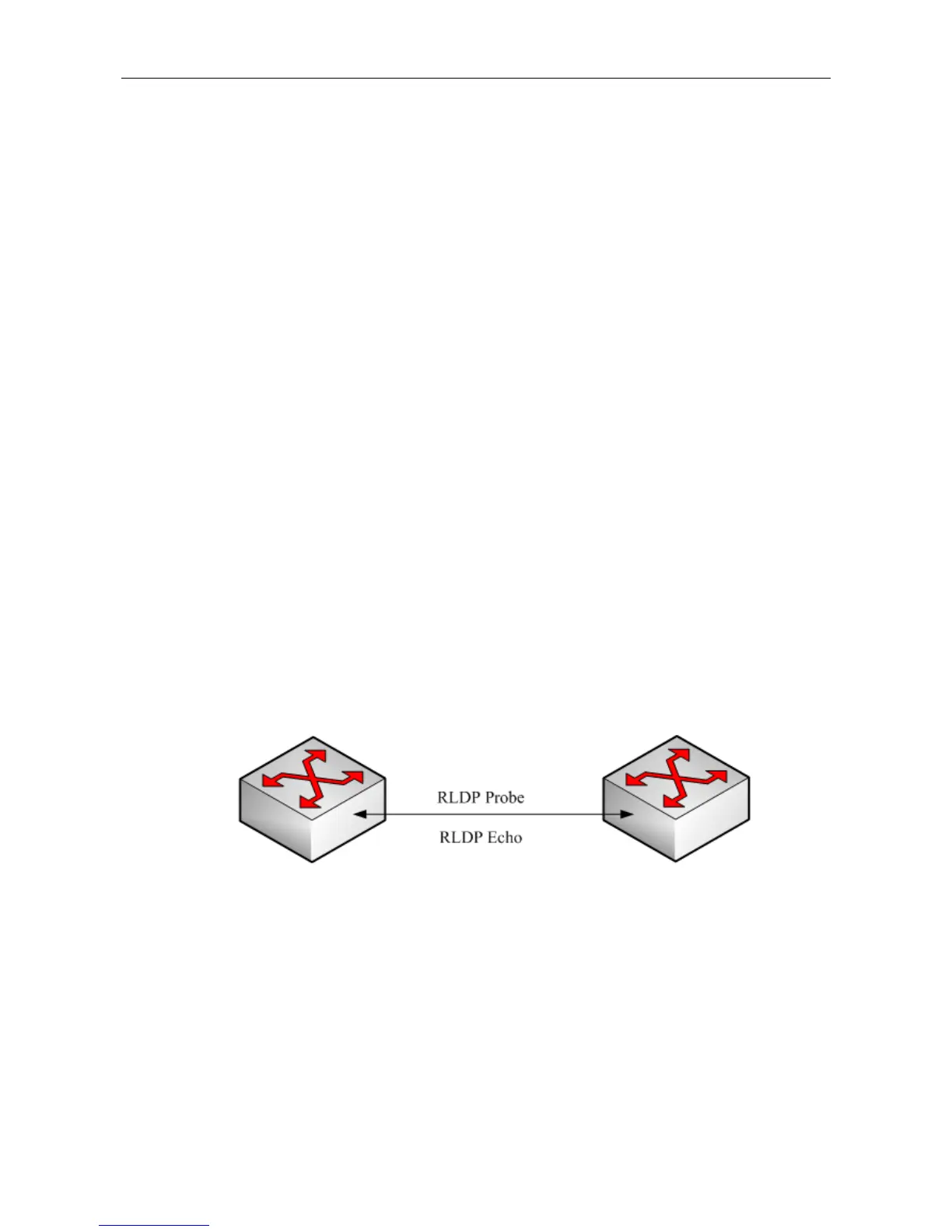Configuration Guide RLDP Configuration
RLDP Configuration
RLDP Overview
Understanding RLDP
The Rapid Link Detection Protocol (RLDP) is one of Ruijie's proprietary link protocol designed
to detect Ethernet link fault quickly.
General Ethernet link detection mechanism only makes use of the status of the physical
connections and detects the connectivity of the link via the auto-negotiation of the physical
layer. This detection mechanism has restrictions and sometimes cannot provide reliable link
detection information for the user. For example, if the optical fiber receiving line pair on the
optical interface is misconnected, due to the existence of the optical converter, the related port
of the device is "linkup" physically but actually the corresponding layer-2 link cannot work for
communications. Here is another example. There is an intermediate network between two
Ethernet devices. Due to the existence of the network transmission relay devices, the same
problem may occur if those relay devices are faulty.
The RLDP enables easy detection of Ethernet device link fault, including the one-way link fault,
two-way link fault and loop link fault.
The RLDP implements the detection by exchanging the RLDP messages at the two ends of the
link, as shown in Figure-1:
Figure-1:
The RLDP defines two protocol messages: Probe message and Echo message. The RLDP
sends the Probe message of this port to the port with RLDP configured and in linkup status on
regular basis, and waits for the Echo message from the neighbor port and waits for the Probe
message sent by the neighbor ports. If a link is correct both physically and logically, a port shall
be able to receive the Echo message of the neighbor port as well as the Probe message of the
neighbor port. Otherwise, the link is considered abnormal.

